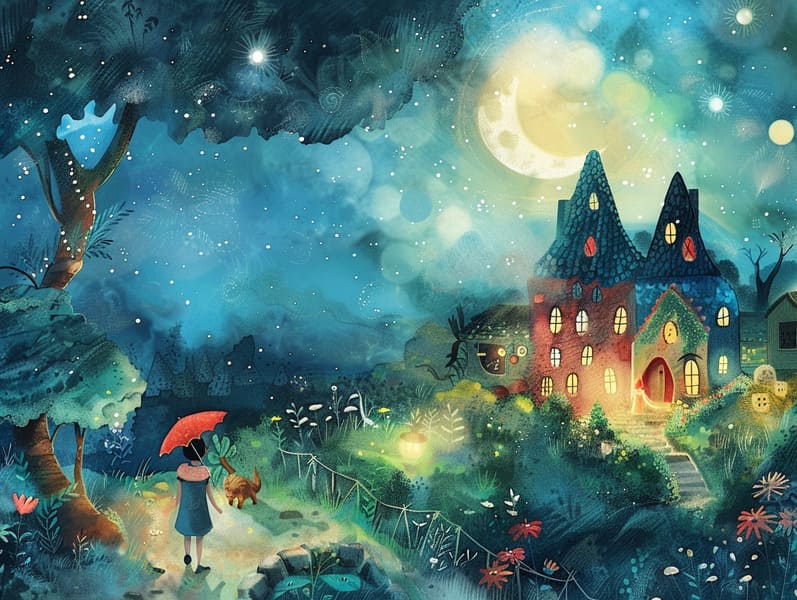The Beginning of Popular Fairy Tales and Its Continued Loveliness.
The Beginning of Popular Fairy Tales and Its Continued Loveliness.
Blog Article

Famous fairy tales have timeless appeal. These tales have been conveyed from one generation to the next long before they were ever transcribed. They developed from a variety of civilizations, including African traditions. They were initially disseminated among elders, often carrying themes and messages aligned with the societal norms and beliefs of the time.
The renowned Brothers Grimm, Jacob and Wilhelm Grimm, were among the first to compile many of these beloved narratives. Their collection, "Grimm's Children's Stories," included tales like "The Story of Cinderella," "The Bread Crumb Trail," and "Snow White," which have since become cornerstones in the world of timeless fairy tales. Similarly, the Danish author's fantastical narratives, such as "The Mermaid," and "The Story of the Ugly Duckling," have captivated hearts worldwide, securing their place in the pantheon of treasured fairy tales.
Despite their historical roots, these tales remain as pertinent as ever, especially as nighttime stories for kids. These magical stories are now available in different formats, including vividly illustrated books, fantastical animations, and internet fairy tales.
Their persistent charm can be traced to several fascinating points:
Moral Lessons: Traditional fairy tales often offer important moral lessons. Stories like "The Story of the Boy Who Cried Wolf" teach the benefit of truth, while "The Tale of the Tortoise and the Hare" show the qualities of resolve and meekness. These tales offer children clear distinctions between correct and incorrect, molding their moral compass in a soft yet significant way.
Empathy and Awareness: Timeless fairy tales frequently showcase personalities facing struggles and tests, encouraging young readers to feel with their struggles and rally behind their triumphs. For instance, "The Tale of Beauty and the Beast" shows us the virtue of valuing inner qualities to acknowledge the inner self of a soul, enhancing understanding and appreciation.
Cultural Appreciation: Many timeless fairy tales are steeped in the cultural contexts from which they were born. Immersing in these stories can provide fascinating glimpses into different societies, promoting a sense of global awareness and understanding.
Inventiveness and Fantasy: The fantastical elements in classic fairy tales—supernatural elements—fuel children’s imaginations. These stories take readers to magical realms, firing up inventive thinking and a sense of amazement that stays a lifetime.
Classic fairy tales are not only magical but also enlightening. They work as fantastical tools in promoting various mental and emotional abilities in young ones. When ancient fairy tales are spoken out loud, they nurture verbal skills by presenting new terms and meanings and sophisticated sentence structures. This practice also enhances auditory skills and focus, as little ones follow the story, looking forward to see what happens next.
Furthermore, deliberating the themes and characters of fairy tales can nurture logical thinking and thought processes. The young are led to see patterns, predict happenings, and understand cause and effect. These deliberations also benefit kids verbalize their thoughts and feelings, cultivating their emotional intelligence.
In today’s technological age, the prevalence of online fairy tales has made these stories more obtainable than ever. Digital sites and programs provide large libraries of timeless fairy tales that can be looked at or played anytime, anywhere. Fairy tales read aloud are particularly favored, giving an enjoyable way for the young to savor these mesmerizing stories. Voice books and read-to-me videos carry website characters and settings to life, often accompanied by bewitching background sounds and background music that enrich the narrative journey.
The timeless charm of timeless fairy tales lies in their ability to adapt to present days while keeping hold of their central messages. Contemporary takes of these narratives often bring in more diverse characters and modern settings, making them relevant to today’s audience. However, the key lessons of fearlessness, kindness, and justice remain unchanged, continuing to connect with young listeners of all ages.
Timeless fairy tales also offer a sense of assurance and knowability. They highlight a structured narrative with a apparent beginning, middle, and end, often winding up with the conclusion of conflicts and the triumph of morality over wickedness. This steadiness can be consoling for the young, allowing a sense of assuredness in an variable world.
Old fairy tales continue to charm and inform new generations, maintaining their captivation and meaningfulness in modern society. As children's night stories, they render accessible a perfect blend of delight and instruction, nourishing moral values, empathy, and creativity. The availability of digital storybooks and the likability of fairy tales voiced secure that these old fairy tales remain acquirable to new generations.
By retaining and telling these tales, we continue to admire the rich tapestry of fantasy and cultural heritage. Whether you are exploring a vividly illustrated book, discovering a electronic collection, or listening on an audio story, the grandeur of traditional fairy tales is always within reach. These tales illustrate of the enduring strength of storytelling and its ability to bring us together across epochs and places.
No matter if you are seeing a vibrantly illustrated book, delving into a digital collection, or listening through an voice book, the enchantment of ancient fairy tales is always within reach.
These tales teach us of the immortal spell of stories and its ability to unify us across centuries and lands, forging a link that captivates and teaches alike.